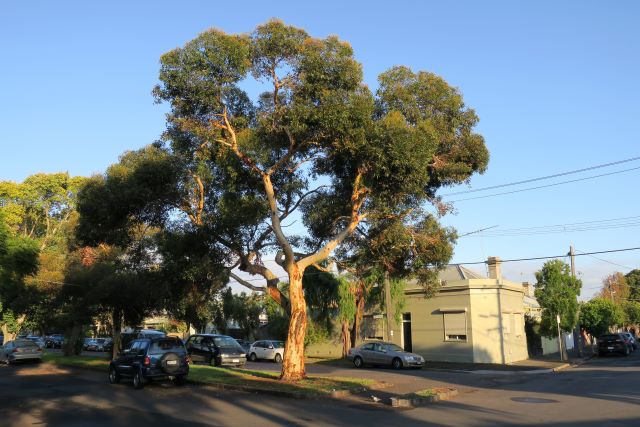
Urban Forest in Port
30%.
That is the percentage of canopy cover needed to achieve the full environmental benefits of the urban forest. 30% is also the percentage of canopy cover needed to qualify as a forest.
Currently, tree canopy cover in Port Phillip is 17% and declining. The decline is attributable to the loss of trees on private land. Port Phillip is the most densely populated local government area in Melbourne and projected to become denser.
There is simply not enough public space to accommodate the trees needed to reach the 30% target. The public space that is available is highly constrained and contested. Car parking tends to take precedence over trees. Both the space above (power lines) and the space below (services) limit trees capacity to reach their full potential.
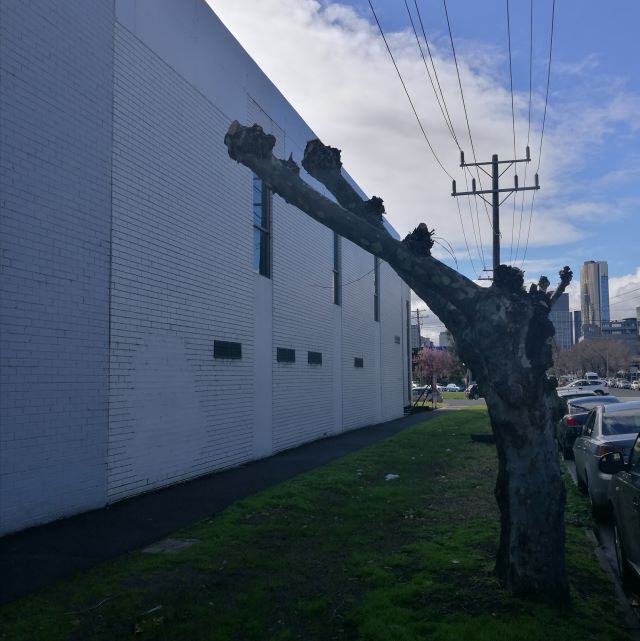
With the anticipated increase in the number of very hot days, the need to cool our cities has become urgent. ‘Trees are not ornaments’, said Dr Greg Moore, ‘they can be the difference between life and death.’ More people die in heatwaves than in bushfires.
Elwood alone of Port Phillip’s suburbs has over 30% canopy cover. But it relies on plane trees. A forest that over relies on one species is vulnerable.
Vitally important though cooling and shading are, if we are to pay more than lip service to biodiversity, tree choice must be a primary consideration. Plane trees may offer shade but they are an ecological desert, according to ecologist Gio Fitzpatrick.
Gio persuasively made the case for incorporating more locally indigenous trees into the urban forest. Locally indigenous trees are those that are locally specific, unique, to our area. Yet locally indigenous trees are seldom planted. Instead, nectar rich eucalypts from western Australia are widely used in parks and reserves. These trees are like aerial lolly shops which attract large nectar eating birds. Small bush birds have nowhere to hide and are disappearing from the urban landscape. Noisy Miners are particularly aggressive towards small birds.
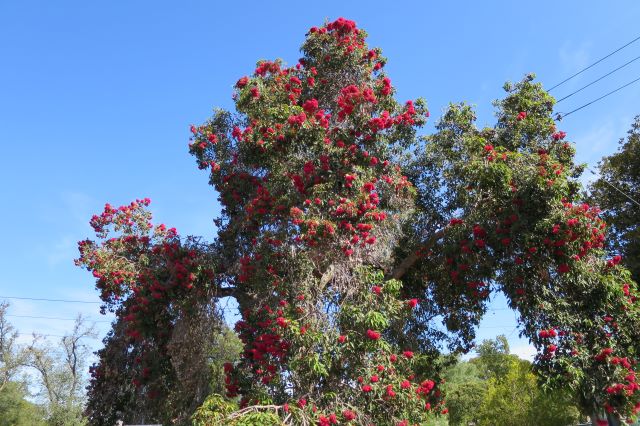
Trees that are unique to our area have co-evolved over thousands of years with other species such as caterpillars and the birds that eat them. A food web. Caterpillars transform more plant tissue into animal tissue than any other group of animals in the world1.
Gio especially encouraged planting Black wattle Acacia mearnsii for the species richness with which it is associated. Black wattle also fixes nitrogen in the soil. When it dies, it ‘provides mulch to die for’, added Dr Greg Moore. The black wattle is seldom planted because it’s a short lived, though quick growing, tree.. That very attribute should make it attractive as a tree planting choice to accelerate tree canopy cover. This is an opportunity as well as a responsibility in plain sight to support biodiversity. Hearing and seeing small birds is also ‘joyous’2.
The specialised interactions between tree and caterpillar, is illustrated in this photograph of the caterpillar of the She-oak moth Pernattia pusilla on a Black She-Oak, Allocasaurina littoralis.
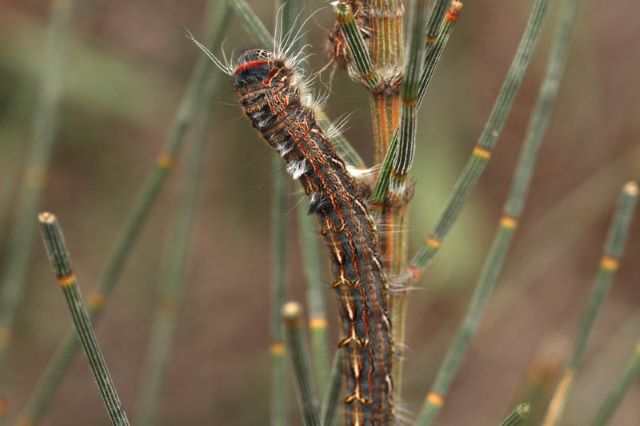
The City of Port Phillip manages 46,000 trees, most of them street trees. Port Melbourne needs to increase its canopy cover by 6.95%, or 939 small trees and 438 large trees, to reach the 30% target. The former industrial precincts of Sandridge and Wirraway in Fishermans Bend have a bigger gap. Protecting the mature trees we already have must be a priority.
Reserves are islands. It’s what in between – our gardens, plants in pots, and street trees, that can make the difference to biodiversity.
Nearly all new development in Port Phillip will be in apartments. Alternative greening approaches such as green roofs and walls need to be actively pursued if we are to approach the 30% target.
These are notes from Urban Heat or Cool Green: Port Phillip Urban Forest forum hosted by PECAN (Port Phillip Emergency Climate Action Network) an alliance of local environment groups. The speakers were Dr Greg Moore (distinguished Senior Research Associate with expertise in arboriculture and environmental services), Jen Witheridge (urban greening specialist leading the City of Port Phillip’s Urban Forest Strategy), and 1,2Gio Fitpatrick (ecologist and naturalist)
More
More detail and data on the City of Port Phillip’s work so far on the Urban Forest Strategy can be found in the document library of the Council’s Urban Forest Strategy page.
https://haveyoursay.portphillip.vic.gov.au/urban-forest-strategy#Document%20Library
Acacia mearnsii – more from the Atlas of Living Australia
3 Comments
-
Helen Halliday
That is a great review of the Urban Forest Strategy Forum run by Pecan and the EcoCentre.. I think an immediate request should go to the Mayor and CEO to review the proposed replanting at the Gas Works Reserve in the light of the information provided by Gio. Continuing to plant regardless of the effect on biodiversity can no longer be tolerated. I was fortunate to have a personal tour of the city with Gio and discovered to my alarm that the species he is talking about are barely planted in our city at all.. The City of Hume has a great list of indigenous species for all locations; https://www.hume.vic.gov.au/files/sharedassets/public/residents/health-waste-and-environment/hume-indigenous-plant-list-2021.pdf
-
Stephen Pennells
Brown fields to Green fields https://ggarrardresearch.wordpress.com/2015/10/15/sustainable-biodiverse-mid-rise-development-for-fishermans-bend/


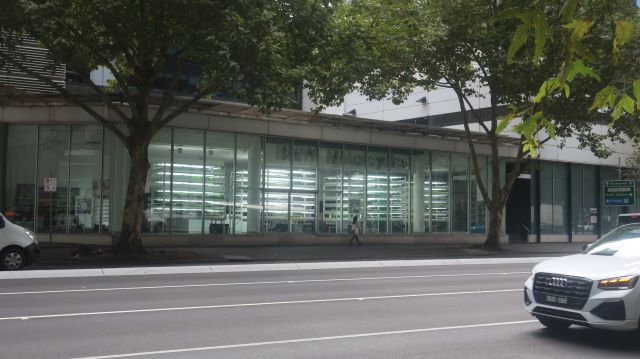
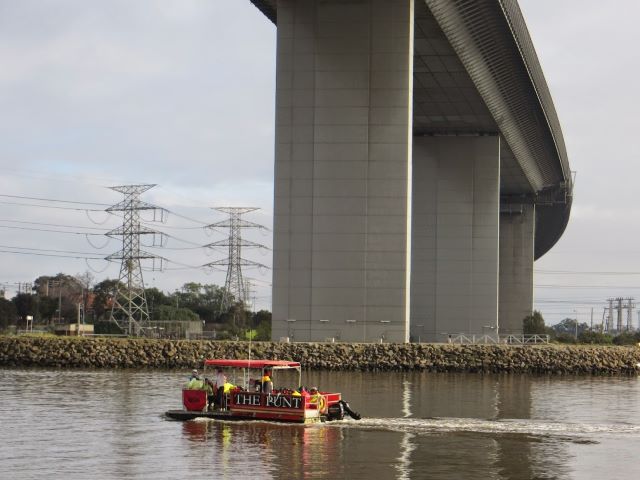
Judy
Fascinating and important. Thank you Janet Engagingly informative